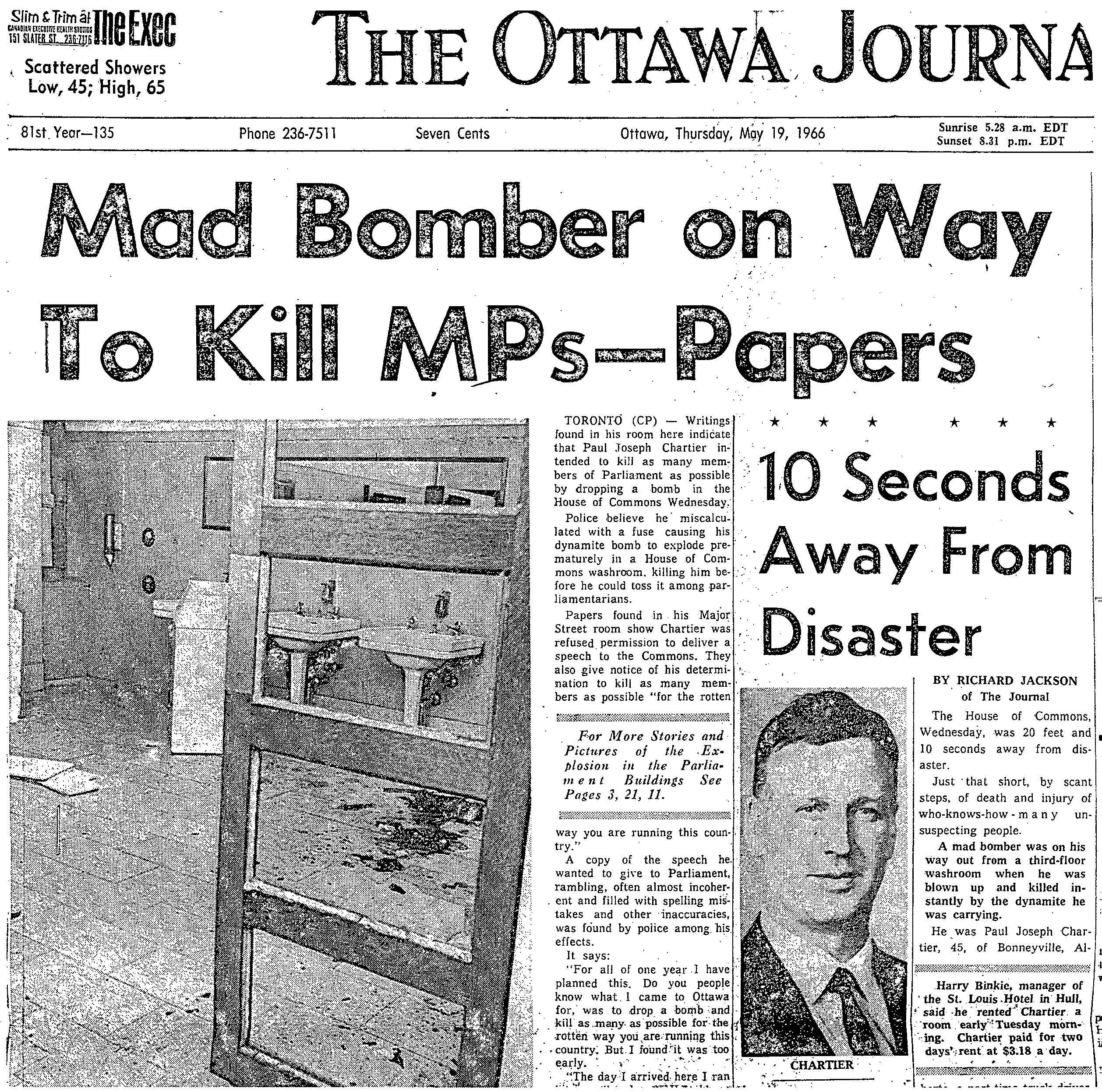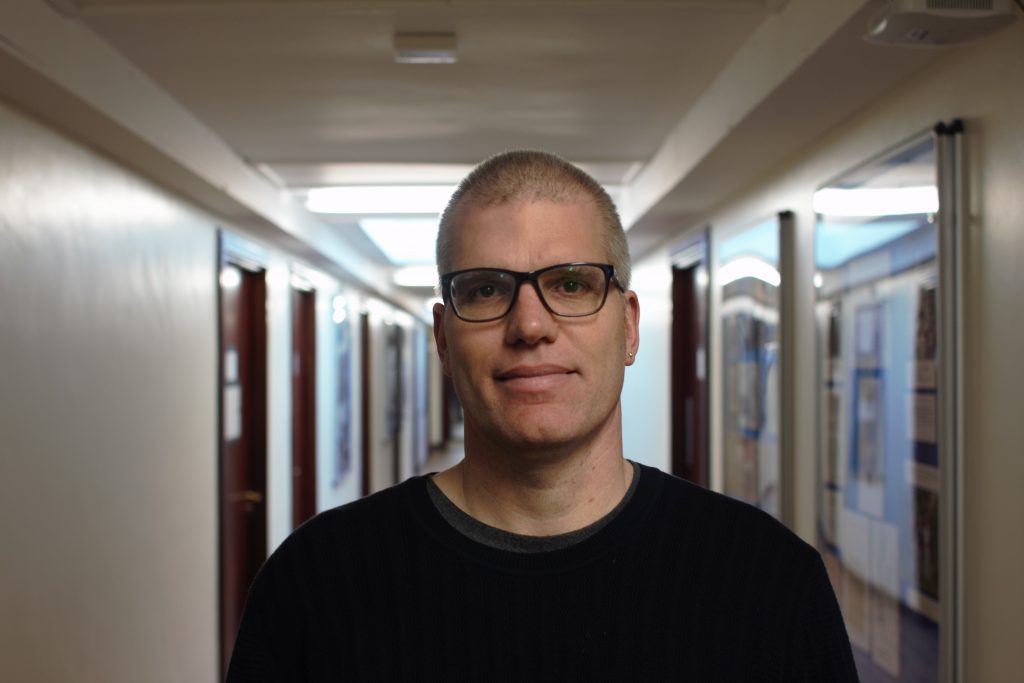
Written by guest blogger Steve Hewitt
Paul Joseph Chartier led a colourful life as a miner, hotelier, private detective, author, and singer in pursuit of a recording career. He ended his life as a lone-actor terrorist. On 18 May 1966, Chartier expelled his last breath on a marble washroom floor outside of the House of Common’s in Ottawa after an explosive device packed with shrapnel he had constructed exploded prematurely before he could toss it into a chamber packed with politicians.
The how and why of Chartier’s ending is what led me to research and write my article that appeared in volume 100, number 1 of the Canadian Historical Review. Although the incident occurred more than a half century ago, it is more pertinent than ever given an increase in acts of extreme violence carried out by men acting on their own as part of a phenomenon known as lone-actor terrorism. The House of Commons’ was the site of one such incident in October 2014 when a gunman, proclaiming allegiance to Islamic State, killed Corporal Nathan Cirillo, a soldier on ceremonial duty at the National War Memorial in Ottawa. He then managed to enter the Centre Block on Parliament Hill with his rifle before he was shot and killed. The reaction struck me as ahistorical, something I wrote about at the time, with media coverage suggesting that Canada had encountered serious terrorism for the first time. Missing, of course, were famous events the Air India bombing of 1985 in which over 300 people, including 268 Canadians, were killed, and the October Crisis that involved the kidnapping and murder of Quebec cabinet minister Pierre Laporte. Less surprisingly absent from Canadian historical memory was Paul Joseph Chartier.
Chartier had a failed life and, fittingly, his failure extended into his effort to be a terrorist. In that sense, his story and trajectory resembles many of those who have received media attention in the present as a result of acts of extreme and deadly violence. There is a tendency in media, political, and event academic discourses to portray lone-actor terrorism as a modern phenomenon. This is inaccurate to say the least. Indeed, there is an opportunity for historians unburdened by the restrictions governing primary source material for more recent lone-actor terrorism to provide considerable insight into terrorism in general. The 1300-page police file at the heart of my research about Chartier was released almost with only a handful of redactions. Terrorism studies scholar Marc Sageman has pointed to history specifically as a discipline where innovative work is being done in a field dominated by social scientists.
Another key aspect and one that my future research will examine is the place of masculinity within lone-actor terrorism. As with mass shooters, lone-actor terrorism is almost exclusively carried out by men. In Canada, between 1868 and 2018, I have identified 19 lone-actor terrorist attacks, 18 of which were carried out by men of all backgrounds, ethnicities, and religious beliefs. The common thread across the attacks is the male identity of the perpetrators. And yet, gender is largely ignored in the various discourses around terrorism unless women are involved. This must change because, as demonstrated in recent attacks in Christchurch and San Diego, men carrying out acts of lone-actor terrorism shows no signs of abating.

Steve Hewitt is Senior Lecturer in the Department of History and the American and Canadian Studies Research Centre at the University of Birmingham in the United Kingdom. He has written a number of articles and books related to security and intelligence in the past and present, and in a Canadian, British, and American context, including Spying 101: The RCMP’s Secret Activities at Canadian Universities, 1917-1997 (University of Toronto Press, 2002), The British War on Terror (Continuum, 2008) and, co-authored with Christabelle Sethna, Just Watch Us: RCMP Surveillance of the Women’s Liberation Movement in Cold War Canada (McGill-Queen’s University Press, 2018). Currently, he is working on two related projects: a history of lone-actor terrorism in Canada and a history of terrorism and counter-terrorism in Canada. In particular, he is interested in the intersection of masculinities and extreme violence, particularly among lone-actor terrorists He also has had a lengthy involvement in Canadian studies in the United Kingdom, including as president of the British Association for Canadian Studies from 2011 to 2014. He tweets regularly at @stevehewittuk and on the history of terrorism at @TerrorisingHis1
His latest article in the Canadian Historical Review, “‘Happy-Go-Lucky Fellow’: Lone-Actor Terrorism, Masculinity, and the 1966 Bombing on Parliament Hill in Ottawa,” is free to read for a limited time here.
